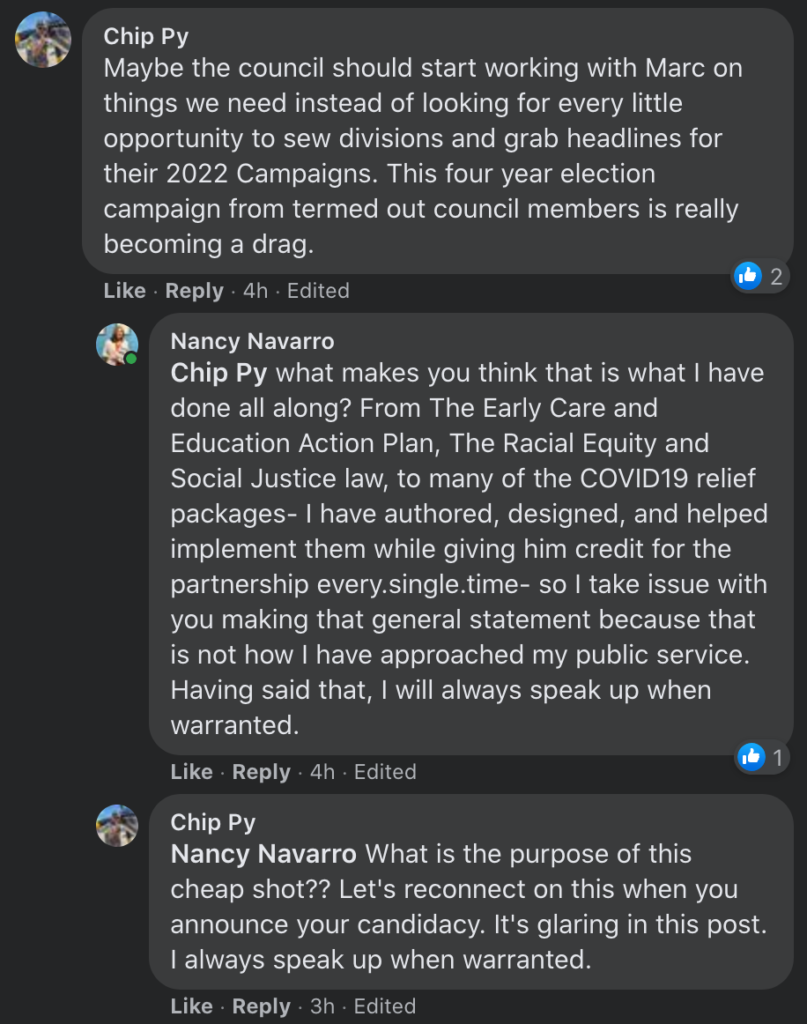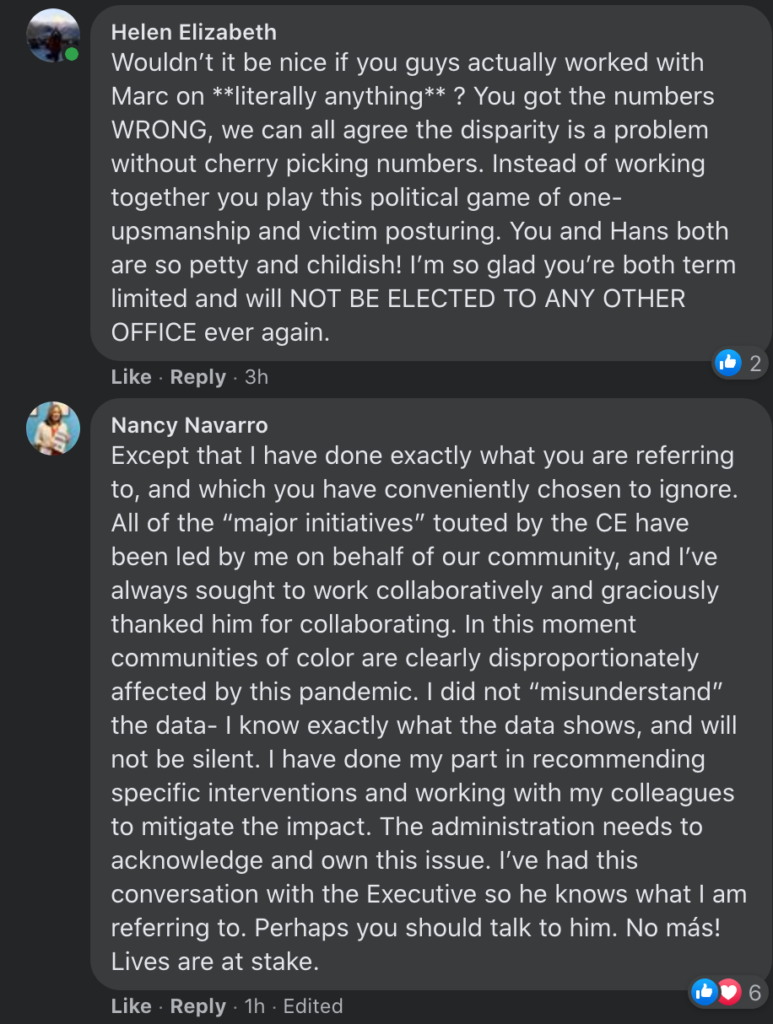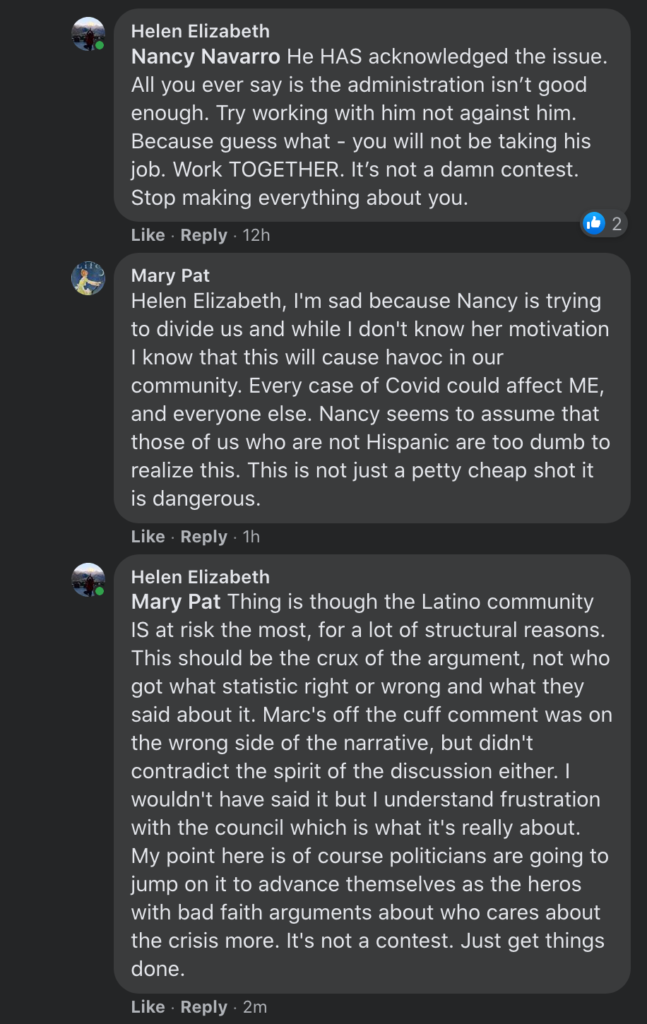Montgomery County has decided to tackle racial equity and
social justice with legislation sponsored by Council President Nancy Navarro
and supported by the entire County Council and County Executive. As Bethesda
Beat reported:
The bill would establish a countywide racial equity and social justice program, according to language introduced Tuesday in a council session. It also calls for a separate Office of Racial Equity and Social Justice.
It would require a countywide equity action plan and individual plans for each of the more than 30 executive departments and offices, including Montgomery County Public Libraries and the county’s police department.
The act would require a racial equity and social justice impact statement at the end of every bill, program, or master plan submitted before the council.
Unfortunately, this bill will do little to address either
racial equity or social justice in any meaningful way. But it will create a new
county office and take up many hours of time by county bureaucrats in other
offices that could be better spent on county services, including existing policies
that promote the goals of the legislation.
What Will Happen
Bureaucrats will respond to the requirement for action plans by deploying personnel to writing plans that demonstrate (surprise!) that their current approach promotes racial equity and social justice. These numerous new reports will be more produced than read but will satisfy the new mandate from their political masters.
Similarly, all new bills, programs and master plans will
have racial equity and social justice impact statements arguing for their positive
impact. It’s hard to imagine that the people who write the impact statements on
new bills or new master plans will write negative reviews of proposals by the
people who employ and supervise them.
What is Racial Equity and Social Justice?
Debates over the nature of racial equity and social justice give
the writers of these many new required plans and impact statements more
flexibility than Gumby. Consider the following examples:
Raises for County Employees. As I pointed out not too long ago, the County Council voted to give delayed pay increases to all county unions except MCGEO–the only majority female and majority minority union in the county. Yet Navarro still took umbrage at the idea that she had overlooked racial equity.
Ironically, Navarro focused on the budget as a primary reason to pass her racial equity legislation: “Budgetary decisions are where the rubber meets the road.” The bill’s primary sponsor failed her own blue chip test for racial equity. Or else the idea is so malleable as to lack real meaning.
Purple Line. The new light rail line is touted as making it easier for poorer people to travel to work. Except that transportation access raises property values, making it harder for poorer people to continue to afford rents around light-rail stops. It also encourages property owners and developers to redo or to tear down existing apartments to attract higher paying tenants, rendering existing residents homeless.
The Purple Line has already created pressure to rezone areas populated by low income residents and businesses. The County Planning Board rejected a proposal to rezone the light industry area in Greater Lyttonsville along the Purple Line to a CR (commercial-residential zone) on a 4-1 vote. This highly diverse area (see pp. 12-13) is home to many small businesses owned by African Americans and Latinos that would have been displaced by the zoning change. The sole vote in favor was Planning Board Chair Casey Anderson, who was recently unanimously reappointed by the same Council that sponsored the racial equity and social justice bill.
Casey can reasonably argue that the decision will reduce the county tax base over the long term, giving it less money to spend on racial equity and social justice. Possibly true but cold comfort for the immigrant and minority-owned businesses that would have been ejected. In any case, arguments can be marshaled for or against policies like the Purple Line and zoning changes on racial equity and social justice grounds. The required reports will likely often be political documents rather than objective analyses.
Won’t Address the Problems Cited by Councilmembers
Here are some of the rationales for the legislation reported in Bethesda Beat:
Council member Will Jawando said he experienced racism for the first time in fourth grade — a lobbed slur as he brushed past an older white women [sic] on the street.
Unemployment is three times higher in District 5, a diverse region with a majority black population, than in the rest of Montgomery County, Council member Tom Hucker said.
Council member Craig Rice raised two daughters who thought people didn’t see skin color, he said, until one of them was the target of a racist taunt on the school bus last week.
“It’s a reminder that there’s a systemic issue here and we need to make sure we’re doing everything we possibly can to change things,” Council member Sidney Katz said at the council session.
Churning out more reports isn’t going to stop racists from calling people ugly and awful racist slurs or prevent children from learning them. I wish it would. I would love for Will Jawando not to experience them, and Craig Rice not to have to explain them to his beautiful daughters.
Most of the county budget goes to schools and basic services like police and fire, so the county’s ability to tackle larger problems like the unemployment rate gap is somewhat limited beyond its very smart decision to continue investing heavily in Montgomery College. In any case, systemic reports won’t do anything about it.
Our Past and Ongoing Commitment
If one views our county’s budget as a moral document, it reflects the county’s long-term commitment to racial equity and social justice.
We dedicate roughly one-half of our spending to the public schools, as part of our effort to assure that every kid has an opportunity. The county schools continue to include more kids of color and more from poorer backgrounds (often not the same). Moreover, MCPS directs substantially more funding to the schools with poorer kids who tend to have greater needs and parents with less means to meet them.
In short, the wealthier areas of the county pay a disproportionate share of taxes, but a disproportionate share of funding goes to schools outside their neighborhoods. That’s entirely as it should be. It’s makes me proud to live in Montgomery. This is not new policy but a very long-term commitment.
In a similar vein, we pay county employees well and give them good pensions. The county works hard to make sure that pensions are fully funded, a commitment that Ike Leggett worked mightily hard to keep as the county coped with the economic downturn’s enormous budget crunch and newfound demands from rating agencies for higher funding. It goes without saying that the county supports and works with unions.
If all of this isn’t social justice, then what is?
I also have little doubt of the concern of each and every councilmember in this area. I don’t think that Nancy Navarro believes that she or other longtime councilmembers, like Craig Rice or Hans Riemer, have failed this test year after year. Marc Elrich became county executive on a platform to combat exactly these sorts of problems.
Did past councils, who put the progressive structure of our county government in place, really ignore these questions? I may often disagree with this or that Montgomery politician, but I’d be hard pressed to name one who doesn’t care. Did Ike Leggett in his long tenure on the county council or three terms as county executive ignore these problems? How about Howie Denis? Or was it Roger Berliner, Nancy Floreen, and George Leventhal?
I’ll take the county council at its word that the proposed bill comes out of a sincere desire to represent the support of Montgomery voters to continue to move forward on these issues. But instead of passing a bill that will mainly generate mounds of reports, it should spend more time engaging with the tough work on issues from affordable housing to making sure students from all backgrounds have the skills and support they need.
Nevertheless, I have no doubt that the proposal will pass easily. The chances of the Montgomery County Council voting this down are about as likely the Montgomery County Republican Party sending me an email in support of undocumented immigrants. No Democrat wants to be seen opposing racial equity or social justice. It is just not worth the ire from progressives attacking one as a racist or insufficiently committed to stamping it out.
That’s a pity. We need fewer totems of our commitment and more of the hard and sadly often not headline-grabbing work of delving into policy that making real change on these difficult issues entails.




